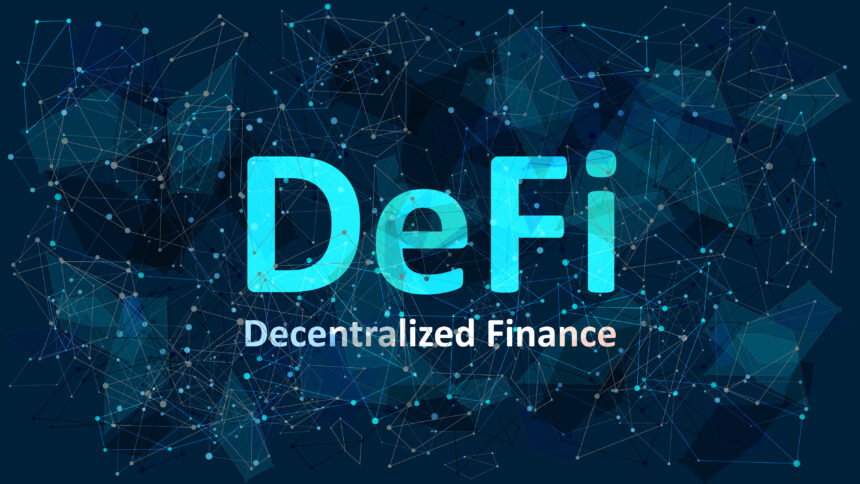Unlocking the World of DeFi
Decentralized finance (DeFi) has emerged as one of the most disruptive innovations in the financial world in recent years. Unlike traditional financial systems that rely on banks, brokers, and financial intermediaries, DeFi platforms operate on blockchain technology, enabling users to access financial services directly and without the need for centralized control. The promise of higher yields, more accessible financial services, and a decentralized governance model has attracted a wide range of investors to the DeFi ecosystem.
In this article, we will dive deep into advanced DeFi investment strategies, highlighting how to optimize returns while managing the inherent risks of decentralized finance. From yield farming and staking to DeFi lending and derivatives trading, we’ll cover a wide array of strategies that savvy investors can employ to make the most of their investments. Whether you are new to DeFi or looking to fine-tune your strategies, this guide will provide the knowledge necessary to navigate this exciting and rapidly evolving space.
What is DeFi and Why is it Gaining Popularity?
DeFi, short for decentralized finance, refers to a range of financial services built on top of blockchain technology. These services operate without traditional intermediaries like banks, allowing for peer-to-peer transactions and decentralized applications (dApps). Some of the most common services offered in DeFi include decentralized exchanges (DEXs), lending platforms, insurance protocols, and stablecoins.
The popularity of DeFi has surged due to several key advantages over traditional financial systems:
- Decentralization: DeFi platforms are typically decentralized, meaning they are not controlled by a central authority. This makes them less vulnerable to the risks associated with centralized entities, such as bank failures or government regulations.
- Transparency: DeFi transactions are recorded on public blockchains, making them transparent and verifiable by anyone. This enhances trust and reduces the chances of fraud.
- Accessibility: DeFi is accessible to anyone with an internet connection, making it easier for individuals in underbanked regions to participate in financial activities.
- Higher Yields: DeFi offers investors opportunities to earn higher returns compared to traditional financial products, such as savings accounts or bonds. Platforms such as lending protocols, liquidity pools, and yield farming offer attractive interest rates and rewards.
However, with high returns come high risks. The decentralized nature of DeFi also means that investors face greater exposure to volatility, smart contract vulnerabilities, and the lack of regulation. As such, advanced investment strategies are necessary to mitigate these risks and maximize returns.
Core DeFi Investment Strategies
The DeFi ecosystem offers a variety of ways to earn returns on investments. Below, we explore some of the most effective strategies that experienced DeFi investors use to navigate the market.
Diversification: The Key to Managing Risk
Diversification is a well-known investment strategy in traditional finance and is just as important in DeFi. By spreading your investments across different DeFi assets and protocols, you reduce the risk of suffering significant losses from a single failure. Here’s how you can diversify your DeFi portfolio:
- Asset Diversification: In DeFi, assets are typically divided into categories such as cryptocurrencies, stablecoins, tokens, and liquidity pool tokens. By holding a mix of these assets, you reduce the impact of market volatility on your portfolio.
- Protocol Diversification: Diversifying across different DeFi protocols is another essential strategy. Instead of putting all your funds into one platform, it is wise to spread your investments across various services like lending platforms, DEXs, and yield farming opportunities.
- Risk and Reward Balancing: Higher returns often come with higher risks. Balancing your portfolio with both high-risk, high-reward assets (such as governance tokens or DeFi start-ups) and low-risk, stable assets (like stablecoins or blue-chip tokens) can ensure a more balanced approach to risk.
By diversifying across both assets and protocols, investors can limit the potential damage of any single loss and ensure smoother returns across their entire portfolio.
Yield Farming: Maximizing Earnings from Liquidity Pools
Yield farming is one of the most popular strategies in the DeFi space. It involves providing liquidity to decentralized platforms in exchange for rewards, usually in the form of tokens. Yield farming can offer high returns, but it also involves certain risks, particularly impermanent loss and platform risks.
To successfully execute a yield farming strategy, consider the following:
- Understand Impermanent Loss: When you provide liquidity to a pool, the value of the assets in the pool may fluctuate. If one asset increases in value while the other decreases, you could end up with a lower overall value when you withdraw your liquidity, even after receiving rewards. This phenomenon is called impermanent loss. Understanding how impermanent loss works and how to minimize it is key to successful yield farming.
- Choose Stablecoins for Reduced Volatility: To mitigate impermanent loss, many yield farmers choose to provide liquidity with stablecoins. Stablecoins are designed to maintain a stable value relative to fiat currencies, such as the US dollar. By using stablecoins, you can avoid the volatility that typically accompanies cryptocurrencies like Bitcoin or Ethereum.
- Use Reputable Platforms: As DeFi platforms are relatively new and can be experimental, it’s crucial to choose platforms with a proven track record. Platforms like Uniswap, Sushiswap, and PancakeSwap are well-established in the yield farming space. Always conduct due diligence on the platform’s security measures, liquidity, and community reputation.
By carefully selecting yield farming pools and balancing risk with rewards, you can enhance your investment returns while minimizing losses.
Staking: A Low-Risk Option for Steady Returns
Staking is the process of locking up your cryptocurrency in a blockchain network to help secure the network and validate transactions. In exchange for staking your tokens, you receive rewards, typically in the form of additional tokens. Staking is less risky than yield farming because it does not expose you to impermanent loss, but it still carries risks, primarily the performance of the underlying network.
To maximize returns from staking, consider the following:
- Select Secure Networks: Staking is most effective when you choose networks with a strong security track record and a solid user base. Ethereum 2.0, for example, offers staking opportunities with attractive rewards, but its performance and rewards depend on the network’s overall health.
- Understand Lock-Up Periods: Many staking programs require you to lock up your tokens for a certain period of time. Ensure you are comfortable with the lock-up period before staking your assets, as early withdrawals may incur penalties or reduced rewards.
- Monitor Network Health: The rewards you earn from staking are tied to the network’s performance. If the network experiences downtime or issues with its consensus mechanism, your staking rewards may be affected. Stay informed about updates, network performance, and any changes to staking conditions.
Staking is a relatively low-risk DeFi investment strategy that offers steady rewards. By choosing the right platforms and maintaining a long-term perspective, you can generate reliable returns.
Lending and Borrowing in DeFi
Lending and borrowing are core components of the DeFi ecosystem. Platforms such as Compound, Aave, and MakerDAO allow users to lend their assets to earn interest or borrow assets by providing collateral.
When lending your assets, you can earn interest on your crypto holdings. Borrowing allows you to leverage your existing assets to access more funds, but it also comes with risks if the market moves against you.
To optimize your lending and borrowing strategy, consider the following:
- Interest Rate Monitoring: Lending rates can fluctuate based on the supply and demand for a particular asset. To maximize returns, keep track of interest rate trends and adjust your lending portfolio accordingly.
- Overcollateralization in Borrowing: DeFi lending platforms often require borrowers to over-collateralize their loans to protect against market fluctuations. For example, if you borrow 100 ETH, you may need to provide 150 ETH as collateral. Be mindful of the collateralization ratios and ensure that you maintain enough collateral to avoid liquidation.
- Explore Flash Loans: Flash loans allow you to borrow assets without collateral, but they must be repaid within the same transaction. While flash loans are typically used for arbitrage opportunities, they are also a high-risk strategy that requires precise execution.
By using DeFi lending and borrowing strategically, you can earn interest on your assets or leverage your holdings for greater returns.
H1: Advanced Risk Management Techniques in DeFi
As with any investment, managing risk is essential for long-term success. DeFi investments, in particular, are subject to higher volatility, hacking risks, and the potential for smart contract vulnerabilities. Below, we discuss advanced risk management techniques to help you safeguard your DeFi investments.
Smart Contract Audits and Security
DeFi protocols operate on smart contracts, which are self-executing contracts that run on blockchain networks. While smart contracts offer transparency and automation, they can also be vulnerable to coding errors or hacks. Therefore, it’s crucial to invest only in protocols with audited smart contracts.
- Look for Verified Audits: Reputable platforms conduct third-party security audits on their smart contracts to ensure they are free from vulnerabilities. Always check if the DeFi protocol has been audited by trusted security firms like Certik or Trail of Bits.
- Security Features: In addition to audits, ensure that the DeFi platform has implemented robust security measures, such as multi-signature wallets, insurance protocols, and bug bounty programs. These features can help mitigate the risks of hacks or exploits.
By prioritizing security and smart contract audits, you can protect your investments from potential vulnerabilities.
Liquidity Risk and Impermanent Loss Management
Liquidity risk is a significant concern in DeFi, particularly in decentralized exchanges (DEXs) and liquidity pools. If a liquidity pool has insufficient liquidity, it may be difficult to execute trades or withdraw your assets without incurring losses.
- Assess Pool Liquidity: Before providing liquidity, assess the pool’s liquidity depth. Pools with higher liquidity tend to have lower slippage and a lower chance of liquidity-related issues.
- Use Impermanent Loss Protection: Some DeFi platforms offer protection mechanisms that minimize the impact of impermanent loss. These platforms may offer additional rewards or insurance-like features to offset potential losses.
By understanding liquidity risk and impermanent loss, you can make more informed decisions about where to allocate your funds.
Conclusion: Building a Successful DeFi Investment Portfolio
DeFi investment strategies offer a wealth of opportunities to earn attractive returns. However, they also come with significant risks that must be carefully managed. By diversifying your investments, using strategies like yield farming and staking, and implementing advanced risk management techniques, you can optimize your returns and minimize potential losses.
The key to success in DeFi is continuous learning and staying informed about the latest developments in the space. As the DeFi ecosystem continues to evolve, investors who adopt a strategic and cautious approach will be best positioned to take advantage of the opportunities this new financial paradigm offers.

